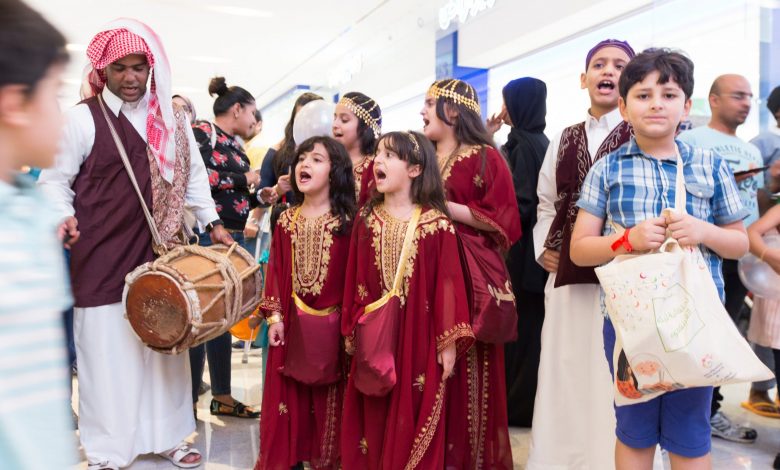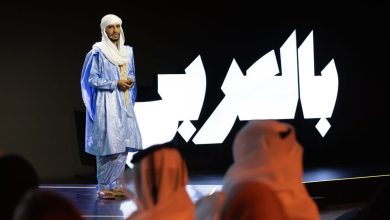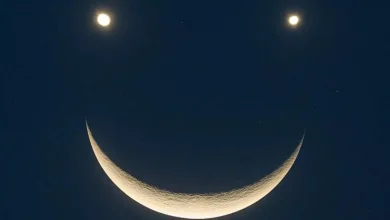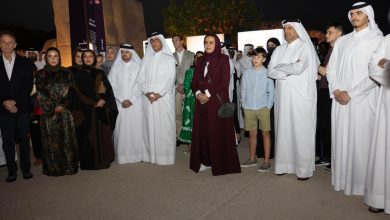
All you need to know about the Qatar Garangao celebrations
كل ما تريد معرفته عن احتفالات القرنقعوه قطر
Doha: Garangao is one the of customs and traditions inherited in the Gulf region where children were and still celebrating and practicing it on the nights of fourteenth, fifteenth and sixteenth of Ramadan and boys and girls prepare for this occasion after the tenth of Ramadan so they count the houses that they will knock on their doors, as they prepare bags their mothers sewed for them, and they hang them around their necks, so the owners of the shops mix the candy and nuts with walnuts, figs, dried fruits, and these nuts are known as Garangao, i.e. the mixed and multi-variety thing.
The celebration of the children begins on this occasion from the moment of sunset, when they hear the Adhan they clap to express their joy on this blessed day and after eating their iftar, they soon leave their homes to gather in the neighborhoods, and the areas in groups, each group chooses a boss and these groups begin to move between the houses of the neighborhood carrying bags, drums and bowls and often disguise in black clothes or put beards or moustaches to bring attention and the children repeat a chant of their own as saying: “oh God keep their child save, may the child be in good health with his mother.”
The housewife or the person on behalf of her usually serves a dish full of Garangao or sometimes money to the head of the group in a bag, so the whole group rejoices.
Garangao in Qatar
Qataris prepare to receive Ramadan from the second half of Shaaban, which witnesses Al-Naflah, a tradition practiced by children and resembles Garangao which they celebrate in the middle of Ramadan, repeating:
Garangao gergao
Give to us, may God give to you
May you travel to Mecca
May you reunite with your family
Oh Mecca glorious city
Oh Noura, the one wearing chains looking astonishing
Give us a package, may God keep Azizan safe and sound
Give us a loofah, may God protect Khalifa
الدوحة: القرنقعوه من العادات والتقاليد المتوارثة في منطقة الخليج حيث كان الاطفال ومازالوا يحتفلون بها ويمارسونها في ليالي الرابع عشر والخامس عشر والسادس عشر من رمضان وكان الصبيان والبنات يستعدون لهذه المناسبة بعد العاشر من رمضان فيقومون باحصاء المنازل التي سيطرقون ابوابها، كما يهيئون اكياسا تخيطها لهم امهاتهم، يدلونها حول اعناقهم من اجل ذلك كان اصحاب الدكاكين يقومون بخلط المكسرات مع النخي والنقل والسبال والبيذان والجوز والتين المجفف والبرميت، وتعرف هذه المكسرات بقرنقعوه أي الشيء المخلوط والمتعدد الاصناف.
يبدأ احتفال الاطفال بهذه المناسبة منذ لحظة الغروب فعندما يسمعون الاذان يصفقون تعبيرا عن فرحتهم بهذا اليوم المبارك وبعد تناولهم لفطورهم فانهم سرعان ما يغادرون بيوتهم ليتجمعوا في الاحياء، والمناطق في مجموعات تختار كل مجموعة رئيساً لها وتبدأ هذه المجموعات التنقل بين منازل الحي حاملين الاكياس والطبول والطاسات وغالبا ما يتنكرون بالملابس السوداء او يوضعون اللحى او الشوارب لجلب الانتباه ويردد الاولاد انشودة خاصة بهم كقولهم: سلم ولدهم يالله خله لامه يالله.
وعادة ما تقوم ربة البيت او من ينوب عنها بتقديم صحن مليء بالقرقيعان او النقود احيانا لكبير المجموعة في كيسه فيفرحون به.
قرنعقوه في قطر
يستعد القطريون لاستقبال شهر رمضان منذ النصف الثاني من شهر شعبان الذي يشهد النافلة وهي من العادات التي يمارسها الاطفال وتشبه القرنقعوه التي يمارسونها في منتصف شهر رمضان مرددين:
قرنقعوه قرقاعوه
عطونا الله يعطيكم
بيت مكه يوديكم
وديكم لأهليكم
يا مكة يا معمورة يام السلاسل والذهل يا نوره
عطونا حبة ميزان يسلم لكم عزيزان
عطونا حبه ليفه يسلم لكم خليفه



